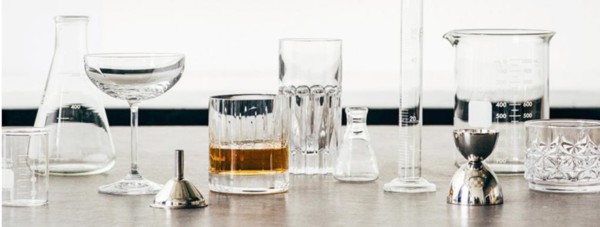

 字體:小 中 大
字體:小 中 大 |
|
|
|
| 2019/01/26 22:05:15瀏覽191|回應0|推薦2 | |
|
#好像啜飲一口3D列印出來的威士忌?
如果品牌是一切,威士忌製造商認為喜歡風花雪月的人算是傳統的消費者。威士忌酒瓶上的標籤,述說著風吹日曬釀酒與黑暗辛苦栽種的過程。美國南方阿帕拉契山山麓混合的穀物與麥芽,給人一種歷史悠久的田園浪漫感。然而舊金山市中心一個無菌實驗室(所生產的威士忌) 就沒那麼浪漫了。
對於一家想顛覆威士忌傳統神聖作法的公司而言,可能是個完美的地方。在這個城市的Dogpatch區,是生產Glyph威士忌的地方。酒瓶上的標籤寫著:『好奇心的挑釁精神。』Glyph是世界上第一個實驗室做出來的『威士忌』,可媲美最精緻的陳年威士忌。美國法律規定,Glyph不能稱為威士忌,由於其不尋常的出處。
直接蒸餾後的威士忌,像伏特加酒,清澈無色,除了酒精外沒有太多味道。它的金黃顏色與豐富的風味,是來自多年放在木桶,木質的分子解離鎖進酒精後才成形。在蘇格蘭,法律規定任何不超過三年的酒甚至不能稱為威士忌。很多最著名的單一麥芽威士忌的年齡都在大約12歲左右。
另一方面,Glyph在24小時內從酒精裝瓶。Endless West該公司的科學家從植物與酵素萃取,置入無味道的酒精當中。『利用像傳統蒸餾的磚塊,我們以內部開發出的一味又一味的過程生產出來。』他們的網站這麼說。他們的首席產品經理Josh Decolongon喜歡將它比做『3D列印出來的威士忌』。
因為大多數威士忌的製程時間大致跟養孩子到完成學業一樣長,所以一夕之間做出威士忌,對於釀酒師是一種聖杯技術。購買,儲存跟配送威士忌所涉及的生產時間和成本整個分解。就像最近將無肉漢堡投入生產的Impossible Foods一樣,Endless West聲稱要降低環境成本。如果它的味道一樣好,售價便宜更多,消費者可能不覺得一定要喝昂貴又須有故事的威士忌。
『桶子裡頭沒有浪漫的故事,』Endless West公司執行長Alec Lee告訴我。他認為Glyph不應該根據實驗室做出來而定義,應該由作出它的人的藝術性來界定。問題是:『我們是否能分辨出當中的不同,知道這是食品科學的創新與未來?是否能與傳統品牌故事區分開來呢?』
但當談到品嘗時,試管真的能與桶裝匹配嗎?情感上沒辦法。蘇格蘭威士忌協會的代表說:『精緻威士忌的獨特風味無法在實驗室複製。』 把味道加進烈酒中產生一種風味的烈酒就不叫威士忌。
記者多年的資源,我養成喝精緻威士忌的品味。但我對平價市場知之甚詳。對我而言,Glyph喝起來像伏特加,有威士忌的風味。想到Endless West公司調製的困難,它做了嘗試,我想這仍是很努力的第一步,很好奇接下去會從它產生什麼產品。所以為了研究看看,我拿了一瓶到倫敦一家常去的威士忌酒吧。
60年代蘇活區的Milroys酒吧,將Glyph與幾瓶雪利酒桶陳釀的威士忌一起陳列,是Endless West希望能仿效的。對三瓶酒的快速嗅聞,經理Patrick McCourt發表他的判決。『罪魁禍首在這裡,』他說,指著Glyph。『看起來不對勁。味道不像威士忌。水水的。幾乎是合成的。味道像白菊』,一種中國烈酒浸泡在糖和植物成分裡。『我們原先擔心會很難分辨,但其實不會。』
在黑岩,靠近倫敦創業區地下室的一個酒吧,經理Thom Solberg比較正面。 『我想給它應有的尊重。有一種甜味跟辛辣。味道有點短暫。有,但很快就消失。』
他嘗試用Glyph跟店裡面的薑汁酒作成飲料,放個冰塊在當中。『糖讓味道具體起來。有助於味道。』就我而言,我覺得蠻好喝的。
Solberg說他計劃進貨,他很高興看到Endless West要發展下一步的產品。可能不必等很久。他們在通路有其他替代品。至少有六家另外的美國新創公司在嘗試大幅縮短烈酒熟齡的時間。其中一家是在洛杉磯Lost Spirits的酒廠所製造的,由Blackrock和Milroys推薦。傳統要等18個月才能放置在“反應器”中完成一個過程。他們稱為『令人感到不舒服 - 法律的說法』。也許這足以讓威士忌製造商嚴陣以待。
https://www.1843magazine.com/food-drink/drinks-cabinet/fancy-a-sip-of-3dprinted-whisky
Fancy a sip of 3D-printed whisky? If the branding is anything to go by, whisky makers think those of us who enjoy a dram are traditionalists. The labels on most whisky bottles tell tales of wind-battered distilleries and dark, stormy peat fields. A sour mash of grain and malt mixed in the Appalachian foothills of the American south gives a sense of pastoral romance steeped in history. A sterile lab in downtown San Francisco – not so much.
It might be the perfect place then for a company hoping to upend the sacred laws of whisky-making. Here, in the city’s Dogpatch district, is where Endless West manufactures Glyph. The label on the bottle they shipped me read: “Provocative spirits for curious minds.” Glyph is the world’s first lab-made “whisky”, which Endless West says rivals the finest aged whiskies. The inverted commas are important here. American law says that Glyph is not allowed to be called whisky because of its unusual origins.
Straight after it’s distilled, whisky – like vodka – is clear, colourless and doesn’t taste of much except alcohol. Its golden hue and rich flavours are developed over years of ageing in barrels as the molecules from the wood bind to the spirit. In Scotland, the law says anything that spends less than three years in a barrel can’t even be called whisky. Many of the best-known single malts are aged for around 12.
Glyph, on the other hand, goes from spirit to bottle in 24 hours. It gets its flavours from molecules that Endless West’s scientists extract from plants and yeasts then insert into the otherwise-tasteless spirit. “By using the same building blocks as conventional distillers, we create fine spirits through a process we’ve developed called ‘note-by-note production’,” their website says. Josh Decolongon, their chief product officer, likes to refer to it as “3D-printed whisky”.
Since most whisky takes roughly as long to make as for a child to finish their education, a “whisky” that can be produced overnight is something of a holy grail for distillers. The production time and costs involved in buying, storing and distributing the barrels would all fall away. Like Impossible Foods, which has recently put meat-free burgers into production, Endless West claims to cut down on costs to the environment. If it tastes as good, and sells for a fraction of the price, consumers may no longer think that an expensive whisky with a compelling backstory is worth it.
“There’s no inherent romance in a barrel,” Alec Lee, Endless West’s CEO, tells me. He argues that Glyph shouldn’t be defined by its provenance in a lab, but by the artistry of those who made it. The question is: “Can we tell a fundamentally different story about innovation and the future of food and science? Is that story going to be mutually exclusive to stories about tradition?”
But can a test tube really match a barrel when it comes to taste? Emphatically no, says a representative from the Scotch Whisky Association, the trade body for Scotland’s whisky industry: “The unique characteristics of quality whisky cannot be replicated in a laboratory. Adding flavouring to a spirit creates a flavoured spirit not a whisky.”
With the resources of a journalist my pallette has been tragically starved of quality whisky over the years, but my knowledge of the lower end of the market is decent. To me, Glyph tastes like a vodka with whisky-like flavourings. Considering the difficulty of what Endless West is attempting, though, I thought it was a good first effort. I was curious to know what more experienced palettes made of it. So, in the interests of research, I took a bottle to some of London’s favourite whisky bars.
At Milroy’s, a Soho establishment since the Sixties, the bar keep lines Glyph up alongside a couple of sherry-cask-aged whiskies, a flavour Endless West hopes to emulate. After a quick sniff of all three, Patrick McCourt, the manager, delivers his verdict. “That’s the culprit right there,” he says, pointing to the tumbler of Glyph. “It doesn’t look right. It doesn’t taste like a whisky. It’s really watery. It’s almost synthetic. It tastes like baiju” – a Chinese spirit often infused with sugar and botanicals. “We were worried it was going to be hard to tell, but it’s not.”
At Blackrock, a basement whisky bar near Silicon Roundabout, London’s startup district, Thom Solberg, the manager, is more positive. “I want to give it the respect it deserves. There’s a sweetness. There’s a spiciness. It seems a bit short. It’s there and then it’s gone.”
He proceeds to make a highball using Glyph and some of Blackrock’s house ginger ale, with a column of ice shot down the middle of the glass. “The sugar adds a bit of body to it. It really helps the flavour.” For my part, I think it’s delicious.
Solberg says he plans to stock it and that he is excited to see what Endless West does next. He may not have to wait long. They have other iterations in the pipeline. And at least six other American startups are experimenting with ways to dramatically shorten the ageing process of spirits. One, which was recommended at Blackrock and Milroy’s, is made by a distillery in Los Angeles named Lost Spirits. It’s aged traditionally for up to 18 months before being placed in a “reactor” to finish the process. They’ve dubbed it “Abomination – Sayers of The Law”. Perhaps that will be enough to get the whisky establishment looking over its shoulder.
|
|
| ( 休閒生活|生活情報 ) |











